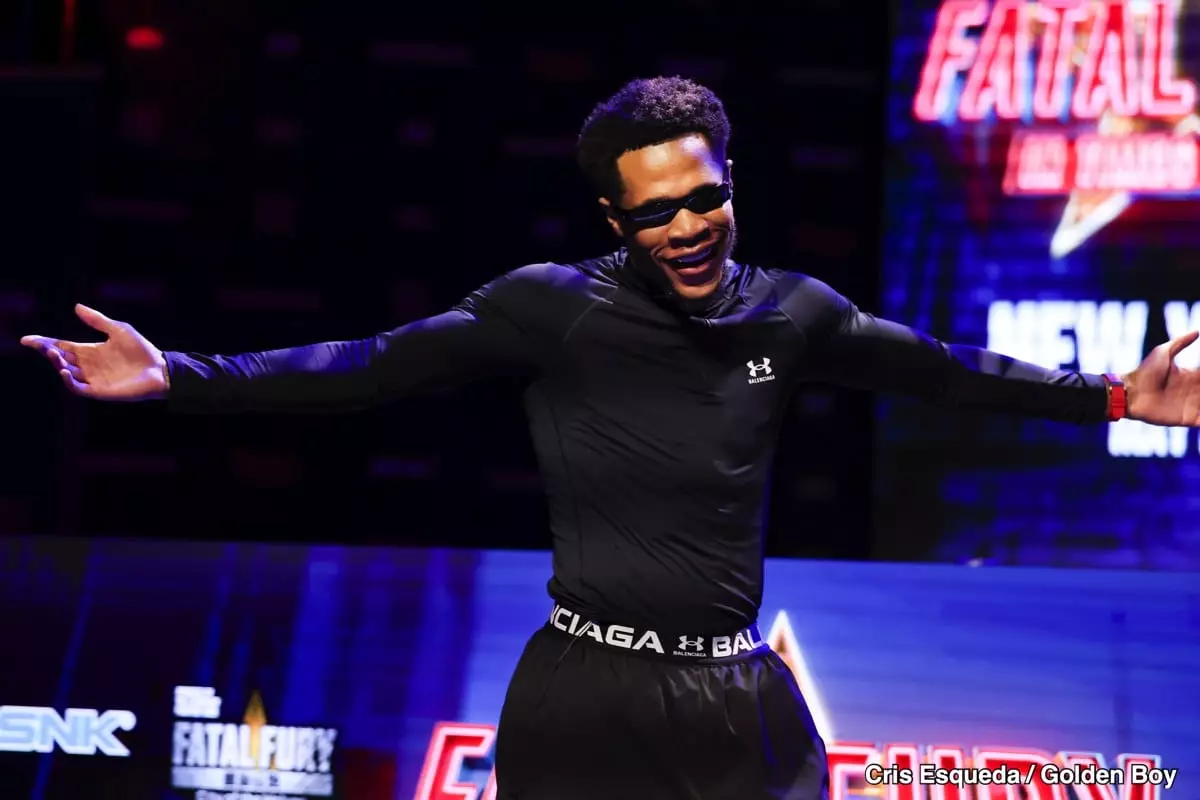In the world of professional boxing, where reputation and public perspective can dramatically alter the trajectory of a fighter’s career, every interaction—especially those in the media spotlight—holds substantial weight. Recently, a tension-filled exchange unfolded between Bill Haney, the father and trainer of boxer Devin Haney, and Todd Grisham, a prominent sports commentator known for his probing questions. This confrontation not only exemplifies the emotional stakes tied to the sport but also calls into question the ethics of sports journalism in portraying athletes.
Bill Haney’s scolding of Grisham serves as a striking reminder of how narratives are constructed in boxing. The questioning focused on Devin Haney’s chin, a pointed inquiry directed at his resilience following his prior match against Ryan Garcia. Grisham’s approach, which could be interpreted as antagonistic, ignited an undeniable passion in Bill Haney, who felt compelled to defend his son’s honor. “You’re painting Ryan Garcia like he’s won something,” Bill exclaimed, implying that the media’s focus on negative aspects concerning his son was unjust and misrepresentative.
Understanding the Context of Criticism
What often gets lost in the emotional outbursts of athletes and their families is the context of criticism itself. When Grisham queried Jose Ramirez about Devin Haney’s chin, there was a clear insinuation that Haney’s credibility was in question after his previous defeat. To an outsider, this could seem like a standard part of sports commentary—a way of engaging the audience and fueling narrative tension. However, for those entrenched in the emotional landscape of boxing, such questions can feel like additional punches in a fight that has already dealt enough blows.
Bill Haney’s passionate rebuttal reflects a deep-seated protective instinct, one that many parents and coaches experience on behalf of their athletes. His observations about the demographics of the audience are also telling; they illuminate the broader socio-political elements at play within the arena of boxing. Many fans in attendance were supporters of Garcia, a reality that complicates the reception of Devin’s performance. Yet, the question remains: how should the media navigate these narratives when the stakes for the athlete are so personal?
Media Representation and Athlete Ethics
Delving deeper, one must consider what Bill Haney’s confrontation reveals about media representation in sports. The responsibility of journalists and commentators transcends mere objectivity; it’s also about fairness and recognizing the hard work athletes invest in their craft. Acknowledging Devin Haney as the youngest undisputed champion of the world is a fact that should balance the narrative rather than serve as a side note.
Todd Grisham, despite his assertion of respect for Devin, fell short in his presentation. This raises an important critique of the media’s role in shaping public interpretation. Rather than merely stating facts, media professionals should strive to uplift and honor the athletes they discuss, framing their inquiries in a manner that reflects the respect deserved by champions in the ring. Bill Haney’s forceful insistence that Grisham acknowledge his son’s accomplishments speaks to a frustration felt by many advocates in sports—an appeal for a more nuanced engagement with the challengingly complex world of professional athletics.
The Fight Beyond the Ring
Ultimately, Bill Haney’s remarks encapsulate a larger fight that goes beyond the physical realm of boxing. In an industry fueled by spectacle, the voices of trainers, parents, and athletes often get drowned out by flashy presentations and sensational narratives. The manipulation of public perception poses real risks, as those who watch may form incomplete understandings of a fighter’s journey based on soundbites and leading questions.
In an era where social media amplifies both praise and criticism, the importance of nuanced dialogue becomes increasingly salient. Bill Haney’s passionate defense not only highlights the emotional investment of familial relationships in sports but also opens up a vital conversation about how journalists can uphold the integrity of athletes in their coverage. A champion’s journey deserves to be told with fidelity to both triumph and trial, ensuring that future discussions lend the respect all competitors inherently deserve, regardless of the inevitable ups and downs.


Leave a Reply